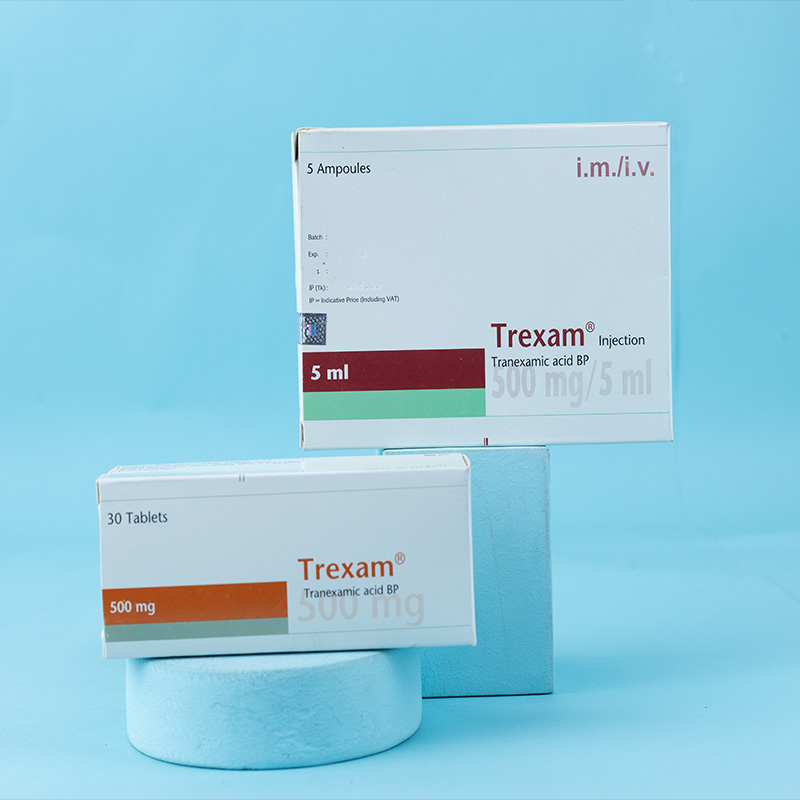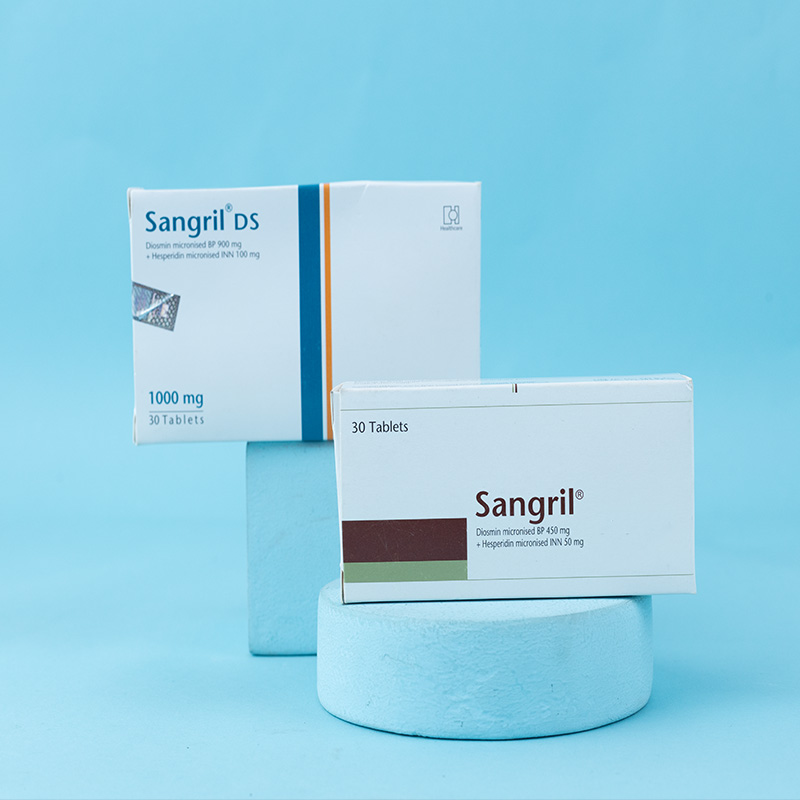Trexam® 500 mg Tablet: Each film-coated tablet contains Tranexamic Acid BP 500 mg.
Trexam® 250 mg/5 ml Injection: Each 5 ml injection contains Tranexamic Acid BP 250 mg.
Trexam® 500 mg/5 ml Injection: Each 5 ml injection contains Tranexamic Acid BP 500 mg.

Tranexamic acid is used to treat and prevent excessive bleeding.
Local bleeding may occur in patients with the following conditions:
Prostate and bladder surgery (Prostatectomy)
Heavy menstrual bleeding (Menorrhagia)
Nosebleeds (Epistaxis)
Dental extraction in patients with blood clotting disorders
Inflammation of the colon and bowel
General bleeding may occur in patients with:
Prostate or pancreatic cancer
After major surgery
Liver disease
Complications after childbirth
Leukemia
Tranexamic acid may also be used to treat hereditary angioneurotic edema (a condition causing periodic swelling of the throat).

Route of administration: Oral
Local fibrinolysis:The recommended standard dosage is 15-25 mg/kg body weight (i.e., 2-3 tablets) two to three times daily.
For specific indications, the following doses may be used:
1a. Prostatectomy: For high-risk patients, prophylaxis and treatment should start pre- or post-operatively with Tranexamic acid injection, followed by 2 Trexam® tablets three to four times daily until macroscopic haematuria is no longer present.
1b. Menorrhagia: Recommended dosage is 2 tablets three times daily, for up to 4 days. Treatment should not begin until menstrual bleeding starts.
1c. Epistaxis (Nosebleeds): If recurrent bleeding is expected, oral therapy with 2 tablets three times daily should be administered for 7 days.
1d. Conization of the cervix: 3 tablets three times daily.
1e. Traumatic hyphema: 2-3 tablets three times daily (based on 25 mg/kg three times a day).
Haemophilia:For dental extractions, take 2-3 tablets every eight hours (based on 25 mg/kg).
Hereditary angioneurotic oedema: Patients aware of onset signs should take 2-3 tablets two to three times daily for a few days.Others may require continuous treatment at the same dosage.
Children's dosage: Based on 25 mg/kg per dose.
Elderly patients: No dosage adjustment is needed unless renal failure is present.
For 5 ml Injection
Adults:Local fibrinolysis: 500 mg - 1000 mg by slow IV, 2-3 times daily.
General fibrinolysis: 1000 mg by slow IV, 3-4 times daily.
Children: 10 mg/kg, 2-3 times daily.

Tranexamic acid is contraindicated in patients with:
Severe renal failure (due to risk of accumulation).
Hypersensitivity to Tranexamic acid or any other ingredient in the formulation.
Active thromboembolic disease.
Special Warnings and Precautions for Use
Massive haematuria from the upper urinary tract (especially in haemophilia) may cause ureteric obstruction.
Disseminated intravascular coagulation (DIC): Tranexamic acid should not be used when DIC is in progress.
In long-term treatment for hereditary angioneurotic edema, regular eye examinations (visual acuity, slit lamp, intraocular pressure, visual fields) and liver function tests are recommended.
Patients with irregular menstrual bleeding should not use Tranexamic acid until the cause of the bleeding is determined. If menstrual bleeding is not adequately reduced, an alternative treatment should be considered.
Patients with a history of thromboembolic events or a family history of thrombophilia should only use Tranexamic acid under strict medical supervision.
Blood levels may increase in renal insufficiency, requiring dose adjustments.
Not recommended in cases of increased fibrinolysis due to DIC.
Clinical experience with Tranexamic acid in children under 15 years of age for menorrhagia is limited.

Pregnancy:No evidence of teratogenic effects from animal studies.
Tranexamic acid crosses the placenta, so caution is advised.
Lactation:Tranexamic acid is present in breast milk at approximately 1/100th of maternal blood concentration.
An antifibrinolytic effect in the infant is unlikely.

Gastrointestinal disorders: Nausea, vomiting, diarrhea (usually improve with dose reduction).
Rare cases of color vision disturbances (discontinue treatment if this occurs).
Rare reports of thromboembolic events.
Rare allergic skin reactions.

Store at a temperature not exceeding 30°C, in a dry place.
Protect from light.
Keep out of reach of children.







